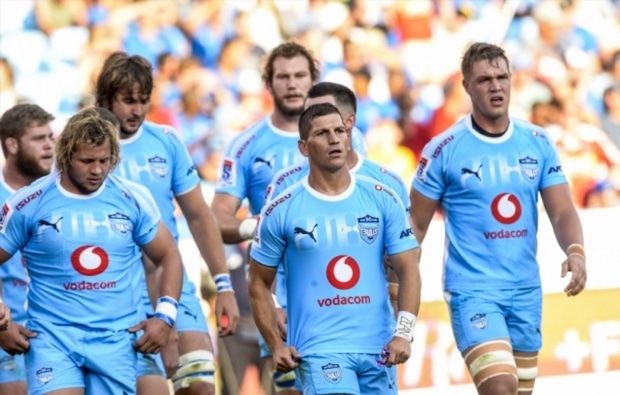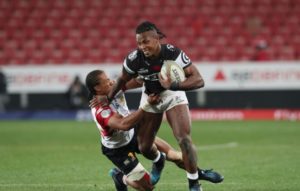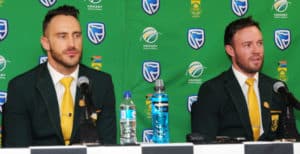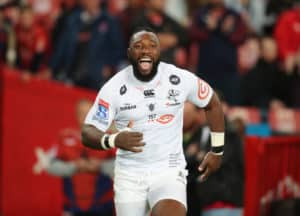The Springboks cannot be expected to hit SA Rugby’s transformation targets when the Super Rugby franchises are failing to do so on a regular basis, writes JON CARDINELLI.
So, how have the South African rugby teams fared on the transformation front since SA Rugby unveiled its plans to field a national side that is 50% black, 50% white and 100% selected on merit at the 2019 World Cup?
I considered this question as I ran my finger down the local team lists in round four. Six players of colour were in the Bulls’ 23-man squad, seven in the Lions’ team, and eight apiece in the Stormers and Sharks groups.
It’s been more than three years since SA Rugby’s Strategic Transformation Plan was put into place. As far as I know, the powers that be still hope to hit those 50-50 targets.
A Bok squad stacked with black players is expected to travel to Japan in September 2019. Why then have we seen Super Rugby coaches picking eight black players at best and five at worst in their 23-man squads over the first four rounds in 2018?
Will the Bulls continue to get away with selecting two or three players of colour in their starting XV? Does it help the Boks’ transformation cause when the vast majority of black Super Rugby players competing are backs, more specifically wing and fullbacks?
I put these questions to Rassie Erasmus when I met with him for a wide-ranging interview this past week. Erasmus has been appointed both director of rugby and Bok coach until 2023.
One would expect the director of rugby to be in a position to address issues like player management and transformation at the respective franchises. It would be to Erasmus’ advantage if he tackled the problem sooner rather than later. The last thing anybody wants to see is Erasmus, in his capacity as Bok coach, scrambling for experienced black players who can add value come the World Cup squad announcement next year.
Erasmus rattled off a long list of black players competing in the Super Rugby and Pro14 tournaments. When I pointed out that most of the household names were outside backs, he conceded that the depth and level of experience in the forward department are sorely lacking.
Erasmus admitted that there isn’t really much he can do to enforce the targets at the lower levels. He won’t call up the respective Super Rugby coaches and instruct them to pick more black players between now and the World Cup.
Without a central contracting system in place, the director of rugby cannot prescribe how players are managed at Super Rugby level. The Bok coach is effectively at the mercy of Super Rugby mentors with regards to the development and the backing of black players – and white players, for that matter. The coaches are not obligated to heed Erasmus’ call.
Considering how the franchises have fared in this department between 2014 and 2017. As many as 107 black players featured in Super Rugby during that period. Only 17 of those players amassed 30 or more starts over those four seasons.
As many as 73 of those 107 players started 15 or fewer games. Either the majority of black players are struggling to establish themselves at that level, or they are not receiving the necessary backing.
With this in mind, why is the Bok coach still expected to meet those transformation requirements?
Many people were surprised when Heyneke Meyer backed only three players of colour to start five or more Tests in 2014 and 2015. Allister Coetzee did marginally better, backing four in 2016 and six in 2017 (to play more than five Tests). Both men were under pressure to pick more black players despite the fact that relatively few were getting a consistent run and amassing experience at Super Rugby level.
South African rugby certainly isn’t short of black talent when one considers the impact made by Lukhanyo Am, Makazole Mapimpi, Warrick Gelant, S’bu Nkosi, Sylvian Mahuza, Curwin Bosch and others these past few weeks. Aphiwe Dyantyi has scored four tries in his first four matches for the Lions, and is already being talked up as the next big thing at Test level.
There’s going to be a fierce scrap for the Bok fullback, winger and outside centre berths over the next two seasons. Erasmus can only take so many outside backs to Japan, though.
How many experienced forwards and inside backs will Erasmus have at his disposal by September 2019? If stalwarts such as Siya Kolisi and Elton Jantjies sustain serious injuries, Erasmus could find himself in a difficult position on the transformation front.
Transformation is not to blame for the poor results of the past two years. If we had to list the number of underwhelming showings delivered by white Super Rugby and Bok players in 2016 and 2017, we’d be here all day. As the numbers above indicate, South African rugby teams are still predominantly white in its make-up.
The transformation process remains complicated, though. The black player pool at Super Rugby level is still relatively small. Experienced black players who could add value to a World Cup tournament where experience is paramount, are in short supply.
The national coach cannot be expected to field a side that is 50% white and 50% black when the Super Rugby franchises are failing to hit those targets on a regular basis. SA Rugby officials keep saying ‘we’ll get there’, but time is running out as far as the 2019 World Cup is concerned.
The average demographic make-up of each franchise tells a story. In 2018, the Stormers lead the way with a side that is 33% black, followed by the Sharks (31%), the Lions (28%), and the Bulls (23%).
More pressure needs to be applied at Super Rugby level with regards to black player development. Only then will we see more black players establishing themselves at that level and graduating to the Test side.
Failure to act will result in another transformation controversy on the eve of the World Cup. The national coach will come under fire for picking too few players of colour, despite the slow rate of transformation at franchise level between global tournaments. We may see players fast-tracked to make up the numbers, a course of action that will, in fact, undermine the transformation cause.
Sounds familiar, doesn’t it?
Erasmus certainly has his work cut out for him on this front. He may have a fair idea of who could feature at the 2019 World Cup, but injuries could compromise those plans.
A six-year tenure may be viewed as a great opportunity to put structures in place and build some depth. That said, until SA Rugby adopts a central-contracting model similar to that of New Zealand, the Bok coach and his Super Rugby counterparts are always going to be at odds and player management is always going to be an issue.
Photo: Sydney Seshibedi/Gallo Images





